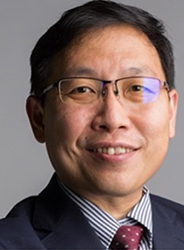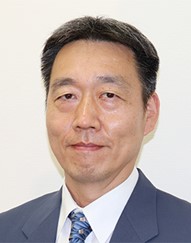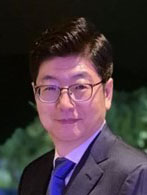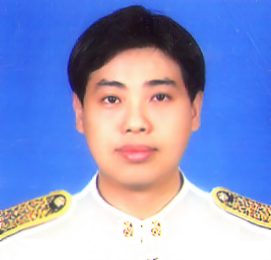ITC-CSCC 2025
July 7(Mon) – 10(Thu) / Chung-Ang University, Seoul, South Korea
Program
-
Full-Paper Submission Begin
February, 2025 -
Notification of Acceptance
March 31, 2025April 25, 2025 -
Notification of Paper Acceptance
May 15, 2025 -
Camera-Ready Paper Submission Deadline
May 31, 2025
TODAY 2025. 07. 12
ITC-CSCC 2025
D-0
Plenary Talks
Spatial Audio Intelligence: From Representation to Understanding and Control of Auditory Environments
Presenter

Prof. Woon-Seng Gan
- Nanyang Technological University, Singapore
Abstract
The integration of sensing, processing, and sound emission within IoT devices has enabled efficient and economical deployment of intelligent audio sensors in urban environments. Devices like the Audio Intelligence Monitoring at the Edge (AIME), deployed in Singapore, operate continuously, adapting to varying conditions and complementing CCTV systems by providing real-time aural data. This data facilitates effective sound management strategies.
This presentation explores the requirements for intelligent sound sensing, leveraging deep learning to extract critical insights such as noise type, source direction, sound pressure, and event frequency. We will introduce deep-learning-based techniques for active noise control, including reducing residential noise intrusion and generating 'acoustic perfumes' to mask unwanted urban sounds, all within an edge-cloud framework. This soundscape intervention device developed in Singapore, designed to enhance urban soundscapes by dynamically sensing ambient noise, selecting natural sound maskers, and adjusting in real-time via ambisonic loudspeakers. The system, driven by AI, minimizes manual oversight while providing adaptive soundscapes. To support this, the Affective Responses to Urban Soundscapes (ARAUS) dataset has been created to benchmark models predicting soundscape perception.
This presentation aims to demonstrate how deep learning can advance acoustic sensing and noise mitigation, addressing current challenges and paving the way for more adaptive urban sound management solutions.
Bio
Woon-Seng Gan is a Full Professor of Audio Engineering and Director of the Smart Nation TRANS (national) Lab in the School of Electrical and Electronic Engineering at Nanyang Technological University, Singapore. He received his BEng (1st Class Hons) and Ph.D. degrees, both in Electrical and Electronic Engineering from the University of Strathclyde, the UK in 1989 and 1993, respectively. He has held several leadership positions at Nanyang Technological University, including serving as the Head of the Information Engineering Division from 2011 to 2014, and as the Director of the Centre for Info-comm Technology from 2016 to 2019. His research has been concerned with the connections between the physical world, signal processing, and sound control, which resulted in the practical demonstration and licensing of spatial audio algorithms, directional sound beams, and active noise control for headphones and open windows. He has published more than 400 international refereed journals and conference papers, co-authored three books, and has translated his research into 6 granted US patents. He is a Fellow of the Audio Engineering Society (AES); a Fellow of the Institute of Engineering and Technology (IET); and elected as the IEEE Signal Processing Society Distinguished Lecturer. He served as an Associate Editor of the IEEE/ACM Transaction on Audio, Speech, and Language Processing (TASLP; 2012-15); Senior Area Editor of the IEEE Signal Processing Letters (SPL, 2019-24); and serving as the Associate Technical Editor of the Journal of Audio Engineering Society (JAES; 2013-); Senior Editorial member of the Asia Pacific Signal and Information Processing Association Transaction on Signal and Information Processing (ATSIP; 2011-). He is also elected as a member of the prestigious IEEE Audio and Acoustic Signal Processing technical committee to drive audio /acoustic activities in the IEEE signal processing community.
He is currently the President of the Asia Pacific Signal and Information Processing Association (APSIPA).
Seeing Through Noise: The Science Behind Sensor Imaging
Presenter

Prof. Seishi Takamura
- HOSEI University, Japan
Abstract
In daily life, we use cameras to capture images and videos, store them, and view them on displays, often believing that what we capture represents the true nature of the object. However, light is actually a collection of photons, whose arrival is entirely stochastic, unpredictable, and therefore time-varying. This means that even a light source with constant brightness produces time-varying measurements on a frame-by-frame basis.
Fortunately, the distribution of photon arrivals follows a mathematically rigid pattern: the Poisson distribution. This property allows us to accurately reveal true image brightness, even exceeding the upper bit limits of an image sensor. It also opens up new possibilities, such as precise sensor calibration, SPAD (Single-Photon Avalanche Diode) sensor photon counting calibration, and could be more.
Moreover, this investigation has led to breakthroughs in precise film grain modeling — a topic that has recently gained attention among analog film photographers. It also provides a scientific basis for reproducing film grain mechanisms in international standards for video coding, such as H.266/VVC.
Bio
Dr. Seishi Takamura is a Research Professor at NTT Corporation and a Professor at Hosei University, Japan. He earned his B.E., M.E., and Ph.D. degrees from the Department of Electronic Engineering, Faculty of Engineering, at the University of Tokyo, in 1991, 1993, and 1996, respectively. His current research interests include efficient video coding and ultra-high-quality video processing.
Dr. Takamura has held numerous key roles in the research and academic community. He served as Associate Editor for the IEEE Transactions on Circuits and Systems for Video Technology (2006–2014), Editor-in-Chief of the Institute of Image Information and Television Engineers (ITE), and as an Executive Committee Member of IEEE Region 10 and Japan Council. He also served as Chair of the Japan National Body and as Japan's Head of Delegation for ISO/IEC JTC 1/SC 29. From 2005 to 2006, he was a Visiting Scientist at Stanford University, California, USA.
Dr. Takamura has received 78 academic awards, including the ITE Niwa-Takayanagi Awards (Best Paper in 2002, Achievement in 2017), the Information Processing Society of Japan (IPSJ) Nagao Special Researcher Award in 2006, the ITE Fujio Frontier Award in 2014, and the Telecommunications Advancement Foundation (TAF) Telecom System Technology Awards in 2004, 2008, and 2015, all with highest honors. He also received the Institute of Electronics, Information and Communication Engineers (IEICE) 100-Year Memorial Best Paper Award in 2017, the Distinguished Achievement and Contributions Award in 2025, the Kenjiro Takayanagi Achievement Award in 2019, the Industrial Standardization Merit Award from Japan's Ministry of Economy, Trade and Industry in 2019, and the IPSJ/ITSCJ Standardization Achievement Award in 2022.
Dr. Takamura is an IEEE Fellow, an IEICE Fellow, an IPSJ Fellow, an ITE Fellow, an AIAA Fellow, and an AIIA Fellow. He is also a member of Japan MENSA, the President of IIEEJ (2024–2026), and a Vice President of the Asia-Pacific Signal and Information Processing Association (APSIPA, 2020–2023).
Advances in Image Processing Technologies and Their Applications in AI
Presenter

Prof. Joonki Paik
- Chung-Ang University, South Korea
Abstract
This plenary talk presents a comprehensive overview of the speaker’s 30-year journey in the field of image processing and understanding, spanning both academia and industry. The speaker will reflect on foundational research conducted during doctoral studies at Northwestern University, where image restoration and edge detection algorithms laid the groundwork for future innovations. This foundation led to industrial breakthroughs at Samsung Electronics, notably in digital camcorder technologies that eliminated the need for mechanical stabilization.
After joining Chung-Ang University, the speaker contributed significantly to digital image processing through advancements in autofocus, restoration, and contrast enhancement, publishing influential academic papers. During a joint research tenure at the University of Tennessee, research expanded into 3D object recognition and multi-sensor technologies for nuclear safety and airport surveillance.
Throughout the 2000s, the speaker led national research labs focused on intelligent surveillance and computational imaging, and more recently has pioneered the integration of artificial intelligence in multimodal image analysis and generation. Key contributions include real-time large-scale video analytics and defense surveillance systems. Additionally, through sustained leadership in the BK21 project and the founding of Chung-Ang University’s AI Graduate School, the speaker has cultivated future generations of researchers at the intersection of AI and imaging. This lecture not only highlights past achievements but also explores the evolving landscape of image processing and its symbiosis with AI, aiming to inspire new directions in research and application.
Bio
Dr. Joonki Paik is a distinguished professor at Chung-Ang University, Seoul, Korea, with over 30 years of pioneering contributions in artificial intelligence, image analysis, and computational photography. He currently leads the IPIS Lab, which he founded in 2023, and is the creator of the DataGenix solution—a groundbreaking tool that reduces the cost of AI training data by over 90%.
His prolific academic career includes over 200 peer-reviewed SCIE journal publications, more than 150 patents, and over 30 billion KRW (approximately USD 22.5 million) in research funding. Prof. Paik has held numerous leadership roles including Vice President of Academic Affairs and Research at Chung-Ang University, President of the Institute of Electronics and Information Engineers (IEIE), and Vice President of the IEEE Consumer Technology Society.
Beyond academia, Prof. Paik has contributed extensively to public service as an advisor to the Ministry of National Defense and the Supreme Prosecutor’s Office in Korea. He has developed AI-powered solutions for national security, nuclear waste disposal, and forensic investigation. Prof. Paik earned his Ph.D. and M.S. in Electrical and Computer Engineering from Northwestern University, USA, and a B.S. from Seoul National University. His outstanding achievements have been recognized with numerous national honors, including the Order of Civil Merit (Hwangjo Geunjeong Medal) and multiple awards for excellence in research and innovation.
Digital Twin for Python Programming on Industrial Robotic System and its applications.
Presenter

Associate Prof. Dr.Vitawat Sittakul
- King Mongkut's University of Technology North Bangkok (KMUTNB)
Abstract
The digital twin is currently the most powerful system for driving the industry due to its flexibility to adapt to many applications. It can be used to simulate any device with realistic characteristics. The programmers can add the environmental effects and a suitable atmosphere so that the users can feel like the real system as much as possible. In this example, the digital twin is being used to simulate industrial arms where almost all automatic factories need it for their manufacturing process. The python code can be real-time programmed the industrial arm and control the move of industrial arm where Artificial Intelligence (AI) can be applied for enhancing the decision maker of the system. This work can be later adapt to many applications.
Bio
Vitawat Sittakul was born in Bangkok, Thailand, in March 1979. He received the B.Eng. degree in Electrical Engineering from Chulalongkorn University, Bangkok, Thailand, in 2000 and the M.Sc. degree (with distinction) in optical and communication systems from Northumbria University, Newcastle, U.K., in 2003 where he worked on the thesis of Investigation of Microstrip Antennas using U-slot. He awarded the Ph.D. degree funding from Thai government and he received the Ph.D. degree from Department of Electrical and Electronic Engineering, University of Bristol, Bristol, U.K., in 2006. He worked in the industry and government for more than 15 years. From 2003 to 2004, he was a Measurement Engineer with Fabinet, where he was a global engineering- and manufacturing services provider. From 2004 to 2006, he was a Senior RF Engineer with Advance Information Service Company, Ltd. (AIS), which is the biggest mobile service provider in Bangkok. From 2006 to 2009, he was a research assistant at the University of Bristol, Bristol, U.K where he advised the students and designs the laboratory experiment. From 2009 to 2015, he worked as an RF Metrologist in the National Institute of Metrology (Thailand) where he developed and calibrated industrial electrical equipment in the primary standard levels. He had been a consultant to many companies such as FPRI advisor company and Telco-Economics company in telecommunication area. He is currently an associated professor in the Department of Electrical and Electronics Engineering Technology and the head of 5G and beyond Wireless Innovation Center, King Mongkut’s University of Technology North Bangkok, Thailand. He had been the chief keynote speaker for more than 8 international conferences and he has published 16 journals and 40 conference proceedings on RF devices & Antenna measurement, optical communication, wireless communication, RF-over fiber, active integrated antennas, antenna design, IoT: smartplug, wireless sensor network, solar tracking system using ZigBee and fuzzy logic control system. He is currently the head of beyond 5G Wireless Innovation Center at King Mongkut's University of Technology North Bangkok (KMUTNB).
Hosted by
- The Institute of Electronics and Information Engineers (IEIE), Korea
- Chung-Ang University (CAU), Korea
- The Institute of Electronics, Information and Communication Engineers (IEICE), Japan
- The Electrical Engineering/Electronics, Computer, Telecommunications and Information Association (ECTI), Thailand





